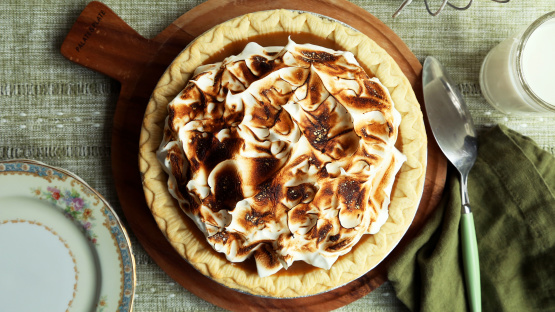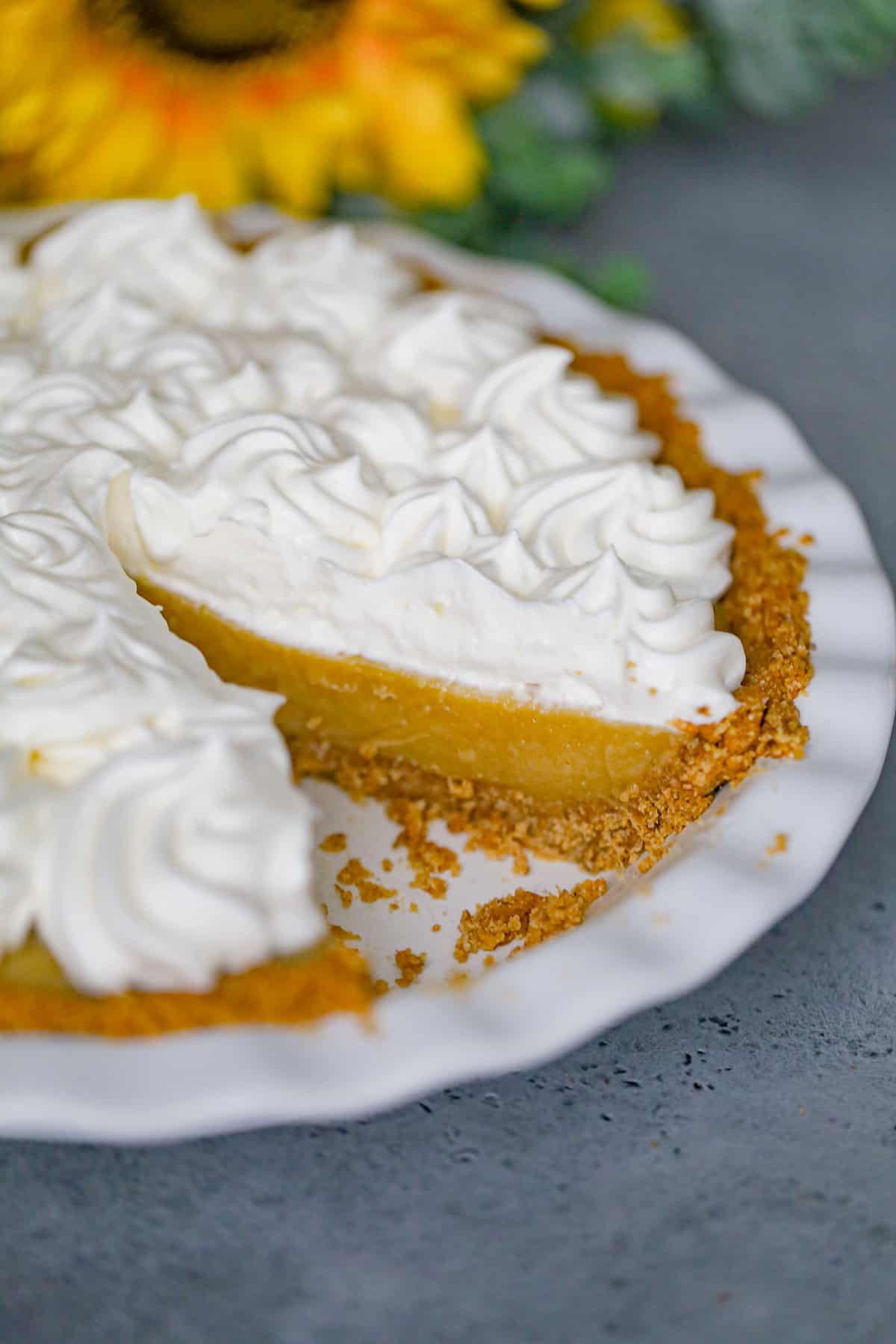Are you ready to learn how to make a delicious and comforting butterscotch pie? I’m here to guide you through simple steps to create this classic dessert at home.
There’s nothing quite like the comforting aroma of butterscotch filling the kitchen. I still remember how Grandma’s butterscotch pie would fill the house with warmth and sweetness. It’s a dessert that brings back childhood memories and makes any gathering special.
Making butterscotch pie might seem intimidating, but I promise it’s easier than you think. With simple ingredients and straightforward steps, you’ll create a delicious, homemade dessert that rivals any bakery treat.
Whether you’re celebrating a holiday or simply craving something rich and sweet, this pie is the perfect choice. Once you master the classic butterscotch flavor, you’ll find it’s impossible to resist. Let’s dive into how you can make this indulgent dessert at home with confidence.
1. Grandma’s Butterscotch Pie
:max_bytes(150000):strip_icc()/ALR-12101-grandmas-butterscotch-pie-VAT-2x1-c0e62d6edf1144a4826ccfc62424c80f.jpg)
Grandma’s Butterscotch Pie is a delightful treat made with a rich butterscotch filling poured into a baked pie crust, then topped with a golden brown finish after a brief oven bake. It’s incredibly creamy and flavorful, perfect for holiday gatherings, and is best served with a swirl of whipped cream for an extra touch of indulgence.
Read the Recipe: Grandma’s Butterscotch Pie
2. Butterscotch Pie

Imagine sinking your spoon into a velvety, homemade butterscotch pudding layered perfectly in a flaky, buttery pie crust—every bite bursting with rich, caramelized flavors. This from-scratch delight is topped with light whipped cream and offers the perfect make-ahead treat that tastes just like a nostalgic Werther’s Original candy in pie form!
Read the Recipe: Butterscotch Pie
3. Butterscotch Pie [handletheheat.com]
![Butterscotch Pie [handletheheat.com]](https://handletheheat.com/wp-content/uploads/2018/10/butterscotch-pie-SQUARE.png)
Butterscotch Pie is a delightful fall treat made with a buttery, spiced Biscoff cookie crust and a rich homemade butterscotch pudding filling, all topped with light, fluffy whipped cream. It’s easy to prepare ahead of time, with no pie crust involved—just a simple cookie crust and stovetop-made filling that tastes like liquid gold, making it perfect for Thanksgiving or Friendsgiving celebrations!
Read the Recipe: Butterscotch Pie [handletheheat.com]
4. Butterscotch Pie [www.savingdessert.com]
![Butterscotch Pie [www.savingdessert.com]](https://www.savingdessert.com/wp-content/uploads/2015/09/Butterscotch-Pie-6-scaled.jpg)
This rich butterscotch custard is poured into a pre-baked pie crust, creating a creamy, caramel-like filling that’s sweet and smooth. Finish it off with a dollop of lightly sweetened whipped cream and a sprinkle of chopped roasted cashews for a delightful crunch—perfect for a cozy fall treat!
Read the Recipe: Butterscotch Pie [www.savingdessert.com]
5. Butterscotch Pie [www.thepioneerwoman.com]
![Butterscotch Pie [www.thepioneerwoman.com]](https://hips.hearstapps.com/hmg-prod/images/butterscotch-pie-recipe-2-672946fe5abf1.jpg?crop=1.00xw:1.00xh;0,0&resize=1200:*)
Making this butterscotch pie is such a delightful experience—start by preparing a buttery crust, then cook a rich butterscotch filling with brown sugar, butter, and milk until smooth, straining it for perfect texture. Finish by filling the crust, letting it chill in the fridge, and topping it with a fluffy meringue just before serving for the ultimate sweet, caramel-like treat!
Read the Recipe: Butterscotch Pie [www.thepioneerwoman.com]
6. Butterscotch Pie [www.wyseguide.com]
![Butterscotch Pie [www.wyseguide.com]](https://www.wyseguide.com/wp-content/uploads/2021/02/Butterscotch-Pie-4-1.jpg)
Creating this butterscotch pie is like blending a smooth, velvety pudding with a crispy pie crust—a perfect comfort food treat! The magic begins by caramelizing brown sugar to develop rich flavors, then mixing it with eggs, milk, cream, and flour to make a luscious filling, all topped with a fluffy Swiss meringue for a finishing touch that’s both airy and irresistible.
Read the Recipe: Butterscotch Pie [www.wyseguide.com]
7. Jolean’s Butterscotch Pie, Pennsylvania Dutch Style

Jolean’s Butterscotch Pie is a beloved Pennsylvania Dutch classic that combines creamy, rich butterscotch filling with a fluffy meringue topping. The process is surprisingly simple: melt butter and brown sugar, mix in egg yolks, flour, and milk, then cook until thickened, pour into a baked pie crust, and finish with a golden meringue baked to perfection for an irresistible treat!
Read the Recipe: Jolean’s Butterscotch Pie, Pennsylvania Dutch Style
8. Butterscotch Pie [www.tasteofhome.com]
![Butterscotch Pie [www.tasteofhome.com]](https://www.tasteofhome.com/wp-content/uploads/2018/01/Butterscotch-Pie_EXPS_FT23_1172_JR_1026_2.jpg)
This butterscotch pie combines a buttery crust with a rich, golden butterscotch custard that’s perfectly thickened with all-purpose flour. It’s topped with a fluffy, toasted meringue, making it a delicious and impressive dessert that’s easy to prepare ahead of time and sure to wow everyone at your party.
Read the Recipe: Butterscotch Pie [www.tasteofhome.com]
9. Butterscotch Pie Recipe

This butterscotch pie features a rich, homemade butterscotch pudding layered in a crisp pie crust, topped with a light and fluffy meringue that’s sure to impress. With simple steps and essential tips, you can easily create this delicious, bakery-style dessert at home—perfect for making ahead and delighting family and friends!
Read the Recipe: Butterscotch Pie Recipe
10. Marvelous Butterscotch Pie

This Marvelous Butterscotch Pie is a creamy, indulgent treat made with rich butterscotch pudding layered into a crisp pie crust. It’s quick to prepare and packed with brown sugar, butter, vanilla, and cream, making it an irresistibly comforting dessert everyone will love!
Read the Recipe: Marvelous Butterscotch Pie
11. Butterscotch Pie [www.scotchandscones.com]
![Butterscotch Pie [www.scotchandscones.com]](https://www.scotchandscones.com/wp-content/uploads/2018/04/butterscotch-pie-lifted-slice-cakestand-flowers.jpeg)
Whip up a rich and creamy butterscotch filling that tastes like a Southern chess pie, encased in a flaky pie crust. Top it with whipped cream for a delightful treat that’s perfect for sharing in small slices!
Read the Recipe: Butterscotch Pie [www.scotchandscones.com]
12. Easy Butterscotch Cinnamon Pie
This easy butterscotch cinnamon pie combines rich butterscotch pudding with warm cinnamon and a tasty shortbread crust, making it a delightful treat for any occasion. No need to roll out dough—just press the crust into the pan, bake, and fill with the creamy pudding for a quick, crowd-pleasing dessert that’s perfect for Thanksgiving or any special gathering!
Read the Recipe: Easy Butterscotch Cinnamon Pie
